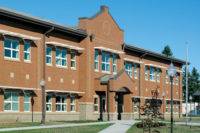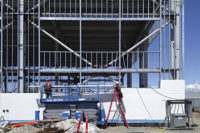The recently enacted Covid-19 relief package titled “Consolidated Appropriations Act, 2021” has extended the Federal Energy Tax Credit (Section 45L) through December 31, 2021, and made the Energy Efficient Commercial Building Deduction (Section 179D) permanent. While both tax incentives offer significant value and the qualification process is simple, they are often overlooked by developers and homebuilders.
Section 45L
Section 45L is a tax credit of up to $2,000 for each new or rehabilitated energy-efficient dwelling unit that is first leased or sold by the end of 2021. If you qualified for the credit but did not take advantage of it in previous years, your tax returns can be amended for up to three past years—2017, 2018 and 2019—to get you the credits you are entitled to.
Qualifying dwellings include newly constructed or rehabbed single-family homes, low-rise apartments, and other complexes of three stories or less, including condominiums, townhouses, senior living facilities, and student housing. The projected annual heating and cooling cost of the dwelling or residential unit must be at least 50% below the annual energy consumption level based on 2006 standards. Most new developments today exceed these standards simply through energy-efficient features, such as high-R value insulation and roofing, windows, doors, and/or HVAC systems.
To capitalize on the 45L credits, you must engage a licensed professional to certify energy improvement standards have been met. The cost of certification is typically much less than the financial rewards gained from the tax credit. For example, consider a three-story apartment complex with 60 qualifying units that were fully leased or sold in 2020:
- Tax credit = $2,000/unit x 60 units = $120,000
- Project Certification Fees (estimated) = $400/unit x 60 units = $24,000
- Net benefit of the 45L credits = $96,000
Section 179D
The 179D Energy Efficient Commercial Building Deduction of a maximum of $1.80 per sq. ft. per qualifying property is available to those who have built or renovated properties they own with energy-efficient commercial building property (EECBP). EECBP includes interior lighting, materials used on the building structure, and mechanical systems. The 179D deduction is also available to those who have designed or built government-owned buildings, such as engineers, architects, and contractors. In certain situations more than one of the companies designing and building a property will qualify for the credit, so it is important to address the issue up front in the building contracts.
Both the Section 45L and 179D tax incentives have been available for years, but few developers and builders who qualify take advantage of them. If you think you might qualify for either one, call your tax advisor. It could mean a significant financial benefit to you and your company.
This article was provided by HBK Construction Solutions Group.





Report Abusive Comment